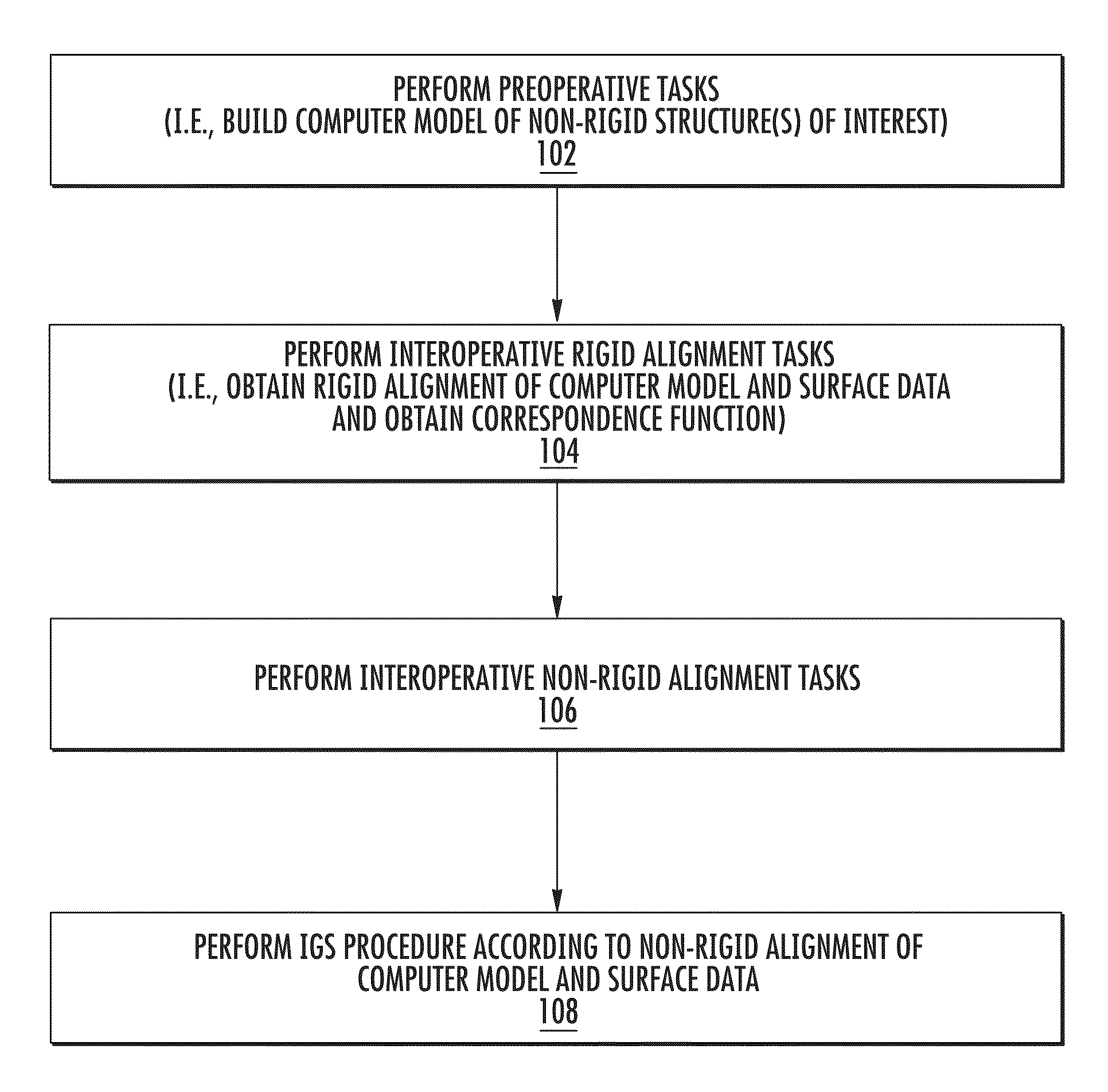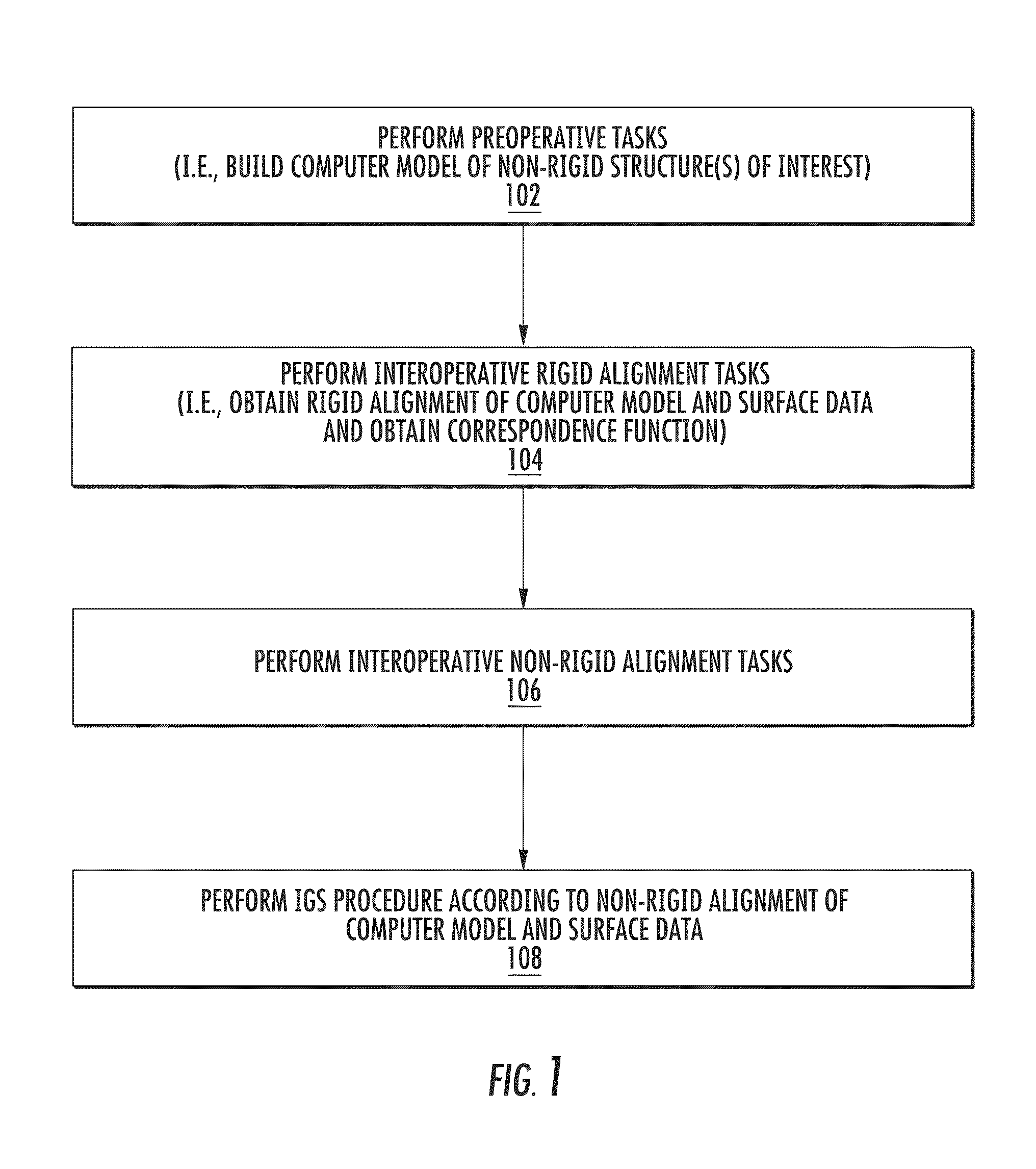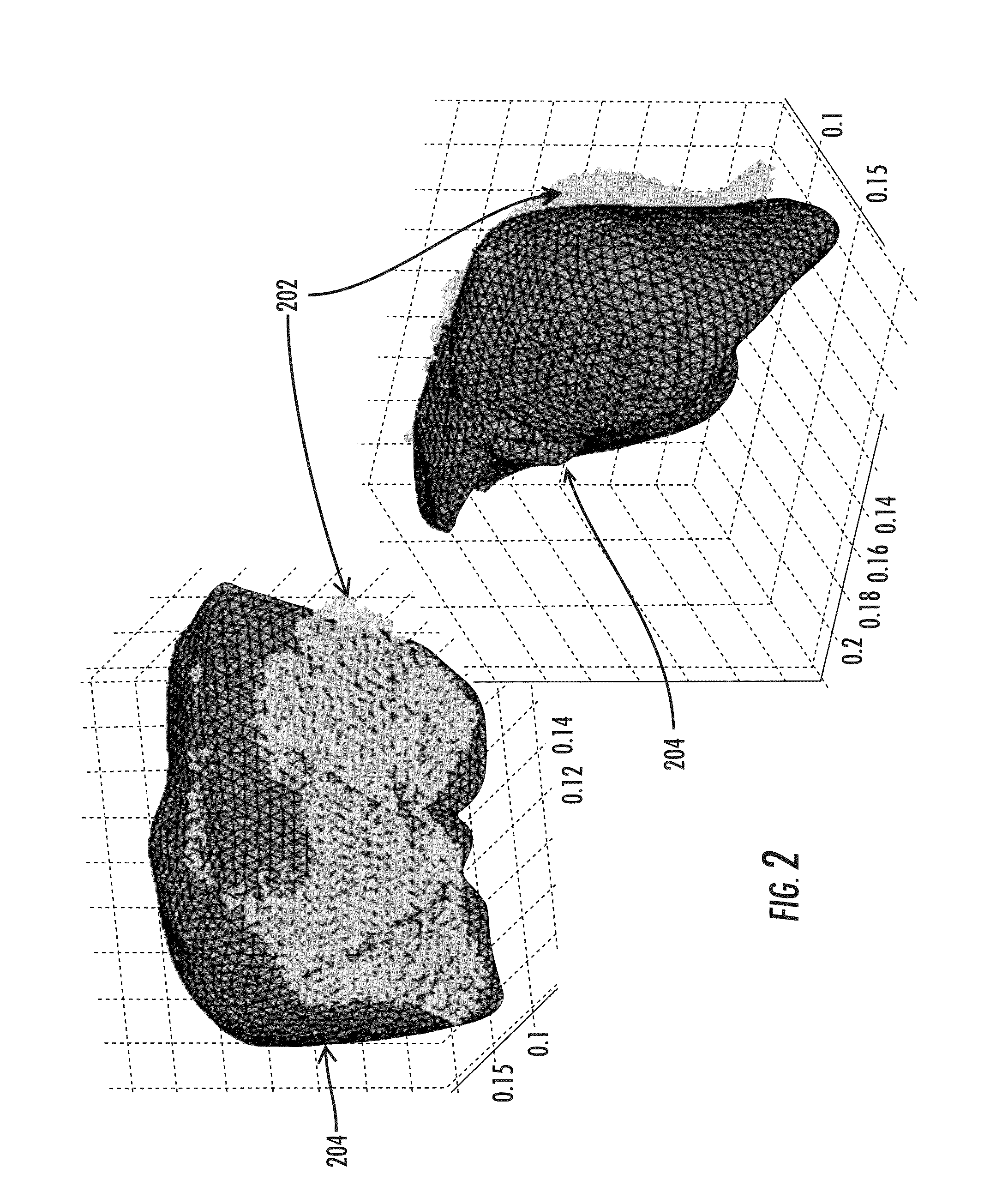Enhanced method for correcting data for deformations during image guided procedures
a technology of image guided procedures and correction methods, applied in the field of system and method of image guided procedures, to achieve the effects of improving efficiency, minimizing errors, and improving accuracy
- Summary
- Abstract
- Description
- Claims
- Application Information
AI Technical Summary
Benefits of technology
Problems solved by technology
Method used
Image
Examples
examples
[0108]The following examples and results are presented solely for illustrating the various embodiments and are not intended to limit the various embodiments in any way.
[0109]A. Methods
[0110]The nonrigid registration algorithm is presented here as a central component in the context of a patient-specific data pipeline for surgical navigation. Prior to the registration realization, several data acquisition and processing steps were performed. The procedures described below were used in both the phantom experiments and the clinical examples presented herein.
[0111]B. Intraoperative Data. Collection
[0112]The method of the various embodiments was evaluated by intraoperatively acquiring a set of 3D points corresponding to a portion of the organ surface. For this, a custom-built commercial laser range scanner (Pathfinder Technologies, Inc., Nashville, Tenn.) was used. Intraoperatively, once the organ is presented, the laser range scanner sweeps a laser line over the surface of interest and r...
PUM
 Login to View More
Login to View More Abstract
Description
Claims
Application Information
 Login to View More
Login to View More - R&D
- Intellectual Property
- Life Sciences
- Materials
- Tech Scout
- Unparalleled Data Quality
- Higher Quality Content
- 60% Fewer Hallucinations
Browse by: Latest US Patents, China's latest patents, Technical Efficacy Thesaurus, Application Domain, Technology Topic, Popular Technical Reports.
© 2025 PatSnap. All rights reserved.Legal|Privacy policy|Modern Slavery Act Transparency Statement|Sitemap|About US| Contact US: help@patsnap.com



